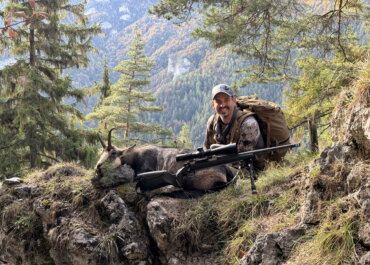Alaska Application Deadline – December 15, 2020
The deadline to apply for big game tags through Alaska’s draw system is December 15, 2020, with draw results posting in mid-February. The fact that Alaska is the first to post draw results is convenient as it allows plenty of time for planning/preparation for successful applicants as well as ample time to make alternative plans for unsuccessful applicants.
Alaska Hunting Information:
- Point System: Currently Alaska does not have a point system in place – everyone’s chances are the same.
- License Purchase Yes/No: Yes, as a prerequisite of applying, a $160 non-resident hunting license must be purchased. WTA TAGS will handle this purchase for you as part of the application process.
- Party Applications: Up to two applicants may apply together.
- Hunter’s Safety Card Requirement: Anyone born after January 1, 1986 must have a hunter’s safety card in their possession while afield. All sportsmen (regardless of age) wishing to hunt big game with bow and arrow must have a specific bow hunter’s safety card in their possession while afield.
- Youth: Applicants are required to be 10 years of age by the opening day of the hunting season to apply/obtain a big game permit.

Available Species:
- Mountain Goat
- Barren-Ground Caribou
- Dall Sheep
- Alaskan Moose
- Roosevelt Elk
- Kodiak Brown Bear
As sportsmen it is almost a guarantee that one or more of the above mentioned species lands on each of our “bucket lists” of must-do hunts. By successfully drawing a tag in Alaska you can be assured you will be in an area with restricted tag allotments which yields a better hunting experience as well as greater trophy potential due to limited off-take.

A key point should also be noted, the state of Alaska welcomed hunters this fall (2020) with open arms as long as a negative COVID test could be produced within 72 hours of arrival. Throughout the fall WTA clients experienced zero issues entering or exiting Alaska. This fact allows me to assume the 2021 hunts will be executed as planned which cannot be said for many other areas.
Over the last 15+ years in business WTA TAGS has obtained a wealth of knowledge regarding Alaska’s draw system, up to date unit recommendations and established firm relationships with the top outfitters in each respective area. TAGS is poised and ready to assist you in drawing and executing your Alaskan dream hunt, for additional information please click the button below or give us a call, 1-800-755-8247











